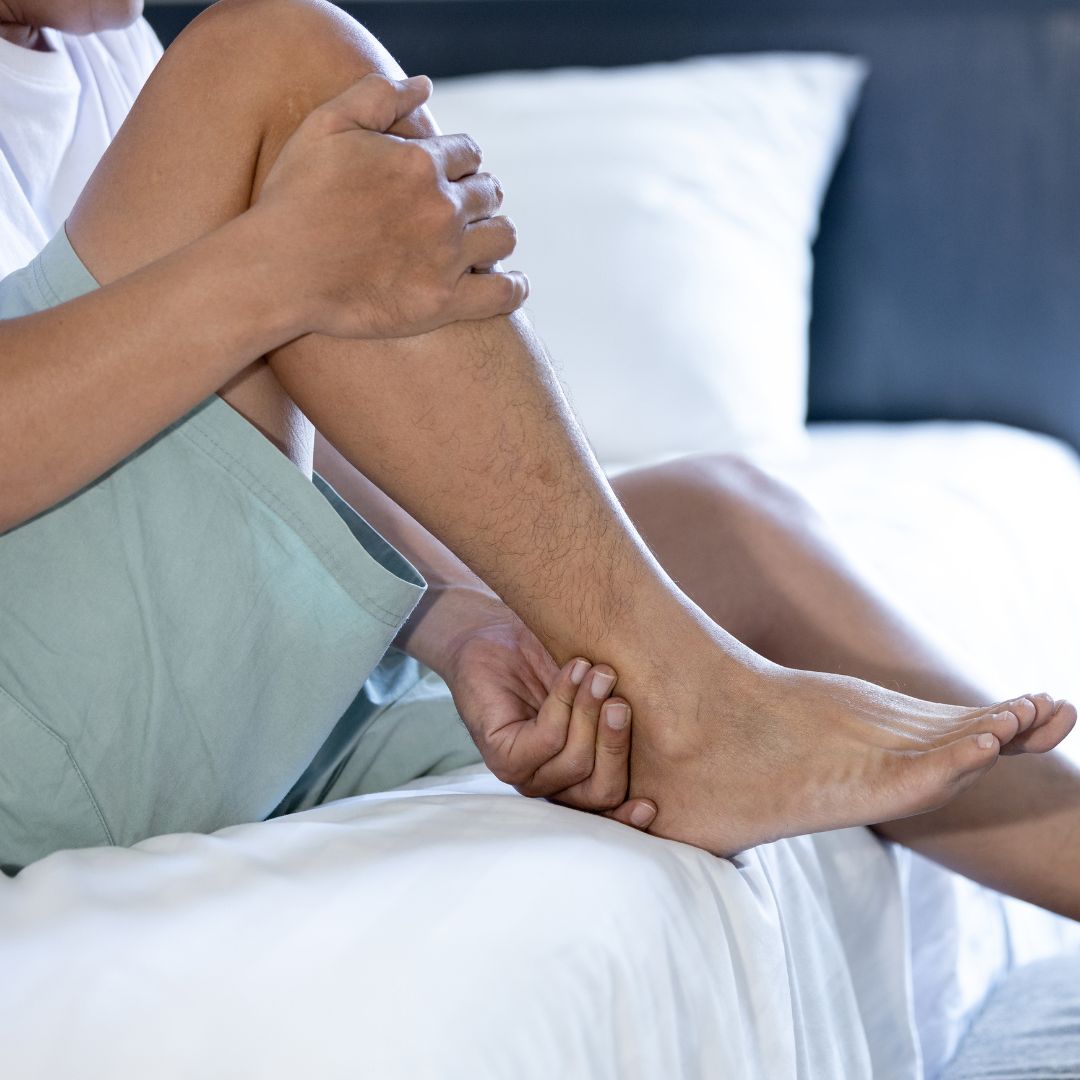How Restless Leg Syndrome Affects Your Night's Rest
By Dr. Peter Klapper Ph.D.
After a long, exhausting day, the time has finally come to lay down and get some rest. As you start to drift off, you notice a sudden urge to move your legs. This sensation continues and is met with an aching or itching sensation, or worse, your legs are on fire. After lying in bed for hours, you find you just can’t sleep. If this sounds like something you’re all too familiar with, then you may be experiencing restless leg syndrome, a condition that affects around 30 million people in the United States.
With a condition that is so prevalent (and all around frustrating), we’re happy to share that there are ways to manage it. So read on as we dive into everything you need to know to finally get a night of uninterrupted sleep.
What is restless leg syndrome?
Restless leg syndrome (RLS) is a neurological disorder characterized by uncomfortable sensations in the legs, which then lead to an uncontrollable urge to move them. These sensations are often described as creeping, crawling, itching, pulling, burning, throbbing, and typically occur when a person is resting (sitting or lying down.)
Restless leg syndrome symptoms are often more pronounced at rest, especially in the evening and at night, and are temporarily relieved by movement. Secondary symptoms of RLS can include insomnia, daytime fatigue, impaired concentration, and mood disturbances. While restless leg syndrome does have some commonalities with other sleep disorders, it can be differentiated based on its unique symptoms and characteristics. Those may include:
Leg cramps typically involve sudden and painful muscle contractions often occurring during sleep.
How To Spot the Difference: Unlike restless leg syndrome, leg cramps don’t involve the uncontrollable urge to move legs.
Peripheral neuropathy is a condition characterized by damage to the peripheral nerves, often causing tingling, numbness, or pain in the affected areas.
How To Spot the Difference: While peripheral neuropathy can cause sensations in the legs, they are typically constant and not relieved by movement, unlike the symptoms of restless leg syndrome.
Nocturnal leg cramps (or Charlie Horses) are sudden, intense muscle contractions that occur during sleep, usually in the calf muscles.
How To Spot the Difference: Nocturnal leg cramps do not involve an urge to move the legs or the characteristic sensations of restless leg syndrome.
Insomnia is a sleep disorder characterized by difficulty falling asleep or staying asleep. How To Spot the Difference: While restless leg syndrome can lead to insomnia due to discomfort in the legs, the two disorders are distinct. Restless leg syndrome involves specific sensations and urges to move the legs, which are not typically associated with insomnia.
Understanding the Causes and Triggers
So, what exactly causes restless leg syndrome? Restless leg syndrome (RLS) is thought to have several contributing factors which include:
- Genetics: Individuals with a family history of RLS are at a higher risk of developing the condition.
- Iron deficiency: Low levels of iron in the brain can contribute to RLS, especially because iron is essential for the production of dopamine, a neurotransmitter involved in movement and pleasure. A dopamine dysfunction is believed to play a role in RLS.
- Other medical conditions: Certain medical conditions such as kidney failure, diabetes, peripheral neuropathy, and Parkinson's disease have been linked to RLS.
- Pregnancy: RLS is more common during pregnancy, especially in the third trimester.
- Medications: Certain medications, such as antihistamines, antidepressants, and anti-nausea drugs can worsen RLS symptoms. On the flip side, withdrawal from sedative medications or dopamine-related drugs can also trigger RLS symptoms.
While there are risk factors that can be the cause of restless leg syndrome, lifestyle factor can also trigger an episode. Times of emotional stress, consumption of caffeine (especially before bedtime), alcohol consumption, MSG or artificial sweeteners, extreme temperatures, and simply not getting enough sleep / having poor sleep quality can be potential triggers of restless leg syndrome.
Diagnosing Restless Leg Syndrome
If you think you may have restless leg syndrome, it’s important to pay attention to your symptoms. Are you experiencing restless leg syndrome symptoms at least twice weekly, or has it been persisting for at least three months? If so, you may have RLS. The only way to really know is to undergo a clinical assessment that includes medical history, physical examination, and possibly diagnostic tests to confirm the diagnosis and exclude other potential causes.
Medical Treatments and Therapies
Once diagnosed, there are medications and non-pharmacological restless leg syndrome treatments that can be used to help with symptoms. Restless leg syndrome medication options include dopaminergic agents like pramipexole and ropinirole, which increase dopamine levels in the brain to alleviate symptoms. Alpha-2 delta ligands such as gabapentin enacarbil and pregabalin, typically used for neuropathic pain and epilepsy, are also effective for RLS. Iron supplements may be recommended for individuals with RLS and iron deficiency. However, the downside is that these medications can have side effects such as nausea, dizziness, and drowsiness.
Another non-pharmacological option for managing restless leg syndrome (RLS) is compression therapy. This treatment involves wearing compression stockings or wraps to improve circulation and reduce symptoms during periods of inactivity. Additionally, transcutaneous electrical nerve stimulation (TENS) can be used, which applies low-voltage electrical currents to the legs to help alleviate RLS symptoms by stimulating the nerves and muscles.
And of course, if you’re looking for the best over the counter sleep aid there is always the natural sleep aid approach such as our Sleep Well Control. Our product uses valerian root (Valerina officinalis) to help people fall asleep faster and improves their sleep quality, so they wake up feeling more refreshed.
Coping Strategies and Lifestyle Changes
Overall, restless leg syndrome symptoms can be managed by making some changes in your lifestyle combined with medical treatments. Things that may help you sleep include lifestyle modifications like regular exercise, dietary changes, stress reduction techniques to create a sleep-friendly environment, and establishing healthy sleep habits.
If stress if a factor for you and contributing to your restless leg syndrome, you may want to consider incorporating relaxation techniques into your schedule like massage therapy and alternative therapies such as acupuncture.
As you move forward, keep in mind that while restless leg syndrome can significantly impact your daily life and sleep quality, it can be managed with the right strategies and support. By working with your healthcare provider and incorporating various coping strategies, you will drift off into dreamland and keep you sound asleep in no time.




